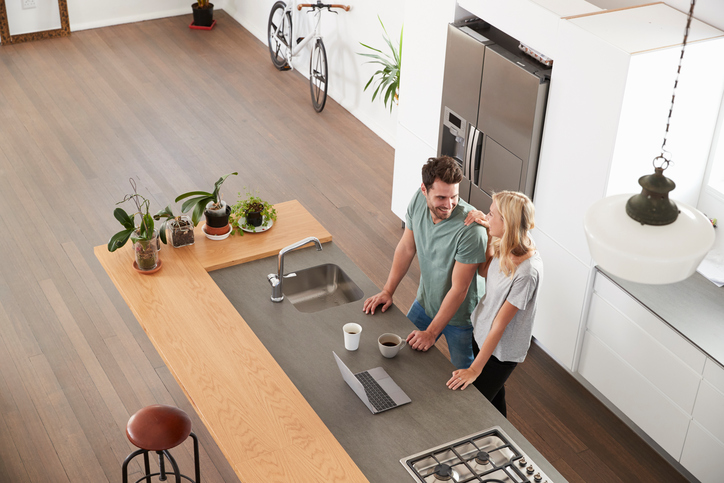
While the influx of Generation Y into the housing market has left some corporate entities puzzled on how to best engage this population segment with their $600 billion annual spending power, one fact remains clear: millennials have really great taste.
With their love of minimalism and practical décor, this generation has taken the reins on international design trends. Whether renting an urban apartment or setting their sights on a single-family home, Millennials have an unprecedented zest for life that comes through in their decor preferences.
“Home design trends are like fashion—constantly in flux,” Shelley Little writes in MyMove. “What’s hot one minute is not so hot the next, leaving you with an outdated home. …. Millennials have a unique perspective on life and how it should be lived, and this outlook is shaping how homes are being designed and built.”
So, what exactly do these styles look like?
Want to learn more about Home Design Trends?
Request Information | or Call Us at 312-329-8400
The following are some of the up-and-coming home design trends embraced by millennials.
- Small Homes and Spatial Efficiency: Many millennials opt for smaller homes that emphasize functionality and efficient use of space. This shift might stem from a desire to minimize materialism or adapt to financial constraints. As a result, millennials often invest in multifunctional furniture that combines comfort, style and storage, making the most of their limited living areas.
- Ethical Products: Millennials tend to be highly discerning about the products they purchase, prioritizing ethical production and sustainability. They are more likely to invest in furniture and decor made by small businesses, artisans or companies focusing on ethical practices and quality materials, even if it means spending more on individual pieces.
- Natural Materials: Modern designs often feature sleek surfaces and industrial elements, but millennials are increasingly drawn to more rustic touches. They appreciate natural materials like wood and brick, which serve as the basis for their interior design, often complemented by an abundance of plants and greenery.
- Sustainability: Environmental consciousness is a priority for many millennials, reflected in their home design choices. They gravitate towards eco-friendly appliances, renewable energy sources, composting facilities, shared resources and green building materials, all of which contribute to a more sustainable lifestyle.
- Mixed Styles: Although millennials have a penchant for modern design and natural features, they also embrace a mix of styles. They often incorporate traditional design elements alongside their contemporary preferences, creating an eclectic and personalized aesthetic. As millennials explore past design trends, they may experiment with retro features that blend seamlessly with modern tastes. One example of this experimentation is the grandmillennial style.
What are the elements of grandmillennial style?
As previously mentioned, millennials often gravitate toward diverse design schemes, and the grandmillennial style perfectly embodies this inclination. Grandmillennial style, also known as “granny chic,” is an interior design trend that embraces a mix of traditional and vintage elements with a fresh, modern twist. This style is particularly popular among millennials who seek to blend nostalgia and comfort with contemporary living. The grandmillennial style celebrates the charm of classic design while also incorporating personal touches and whimsical elements.
Various elements that define the grandmillennial style include:
- Antique and vintage furniture: Grandmillennial style emphasizes using antique and vintage furniture, such as wooden sideboards, dressers and armchairs. These pieces evoke a sense of history and character, adding warmth and personality to a space.
- Traditional patterns: This style features classic patterns such as chintz, toile, plaid and floral prints often found in fabrics, wallpaper and upholstery. These patterns lend a timeless and elegant feel to the space.
- Layered textiles: Grandmillennial interiors often showcase a mix of rich fabrics, including velvet, silk and linen. Layering textiles through window treatments, cushions and throws adds depth, comfort and visual interest.
- Decorative accents: Decorative objects such as porcelain, crystal, silver and brass are common in grandmillennial spaces. These accents may include heirloom pieces, flea market finds or even family treasures, adding a personal touch to the space.
- Needlepoint and embroidery: Handcrafted items like needlepoint pillows, embroidered linens and cross-stitched wall hangings are hallmarks of grandmillennial style. These pieces reflect a fondness for traditional crafts and techniques and a commitment to preserving and showcasing these skills.
- Ruffles, fringes and trims: Decorative embellishments and trims are often found on curtains, cushions and lampshades in grandmillennial interiors. These details contribute to the charming, nostalgic atmosphere of the space.
- Bold colors and maximalism: Unlike minimalist styles, grandmillennial design embraces bold colors, rich patterns and a more-is-more approach to decorating. The style encourages mixing and matching different elements, creating an eclectic and visually stimulating environment.
- Gallery walls and bookshelves: Grandmillennial style often features curated gallery walls with art, mirrors and prints, and well-stocked bookshelves filled with beloved titles. These elements contribute to a cozy, lived-in atmosphere characteristic of this design trend.

Now more than ever, millennials look for practicality and durability in their home products.
“Millennials consider sustainability in every sense of the word,” Michael Merschat of Wentworth Inc. said in a statement to The Washington Post. “Environmental impact is driving the selection of materials, but they are also concerned about durability and functionality of the things they buy.”
As millennials age, their tastes may evolve, but they will likely continue to set the home design rules for the foreseeable future. Home builders, designers, rehabbers and REALTORS® take note!








